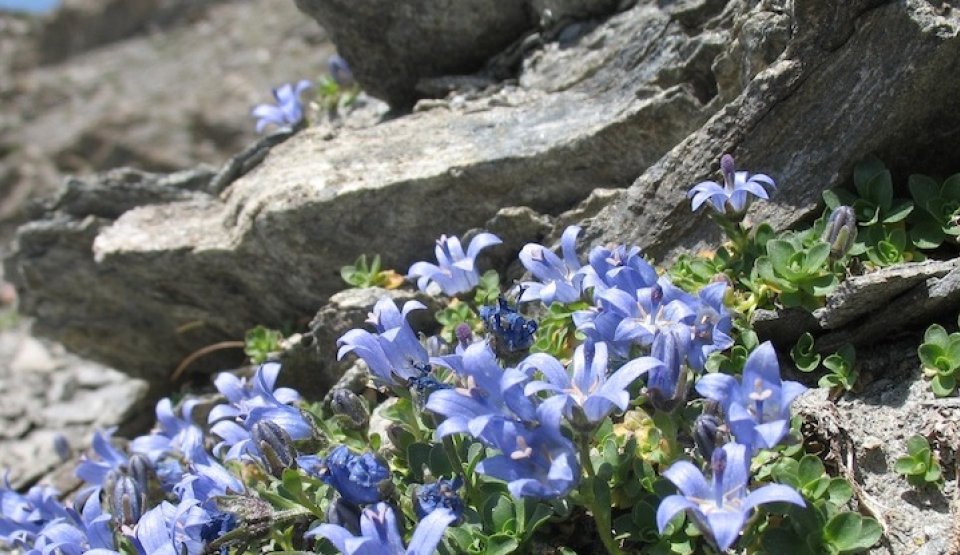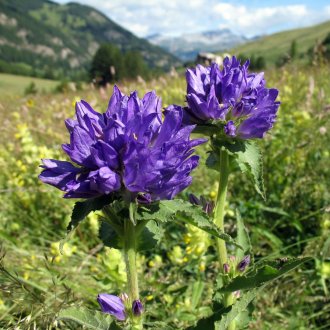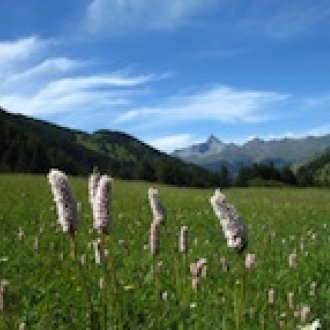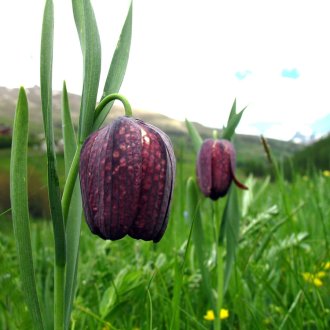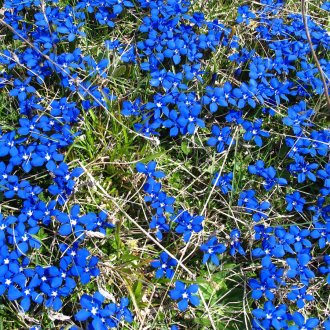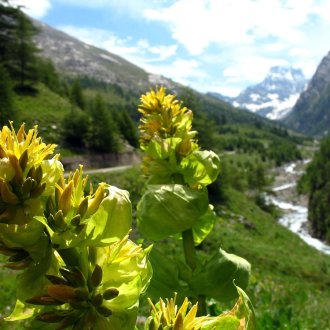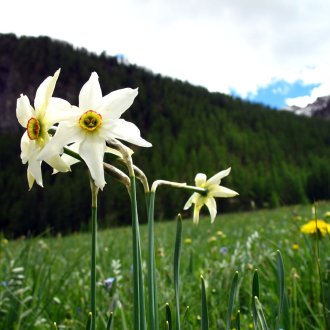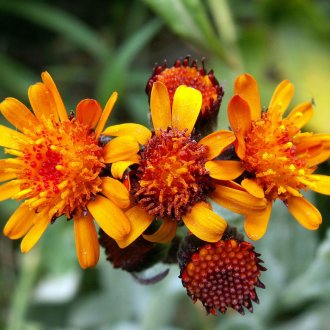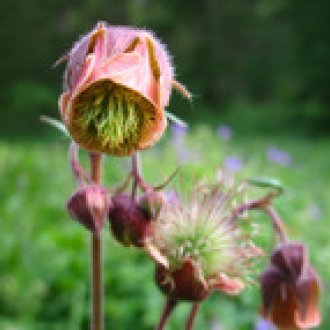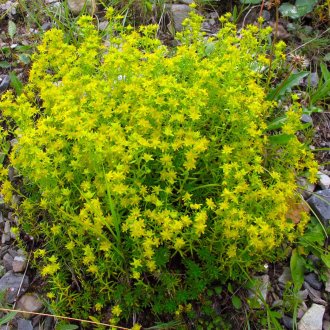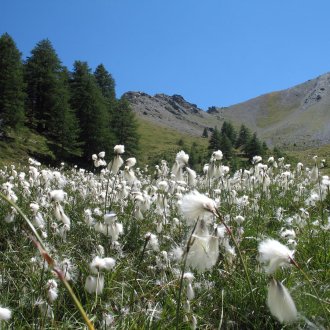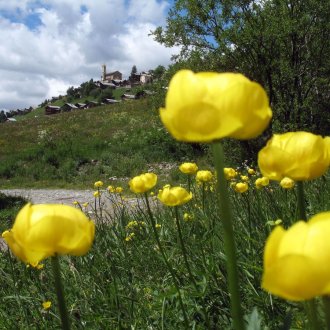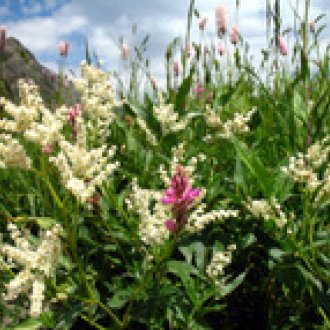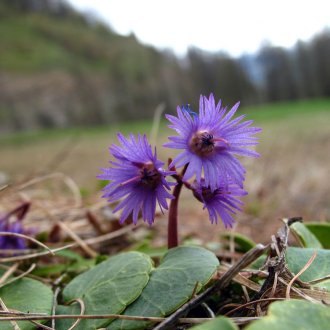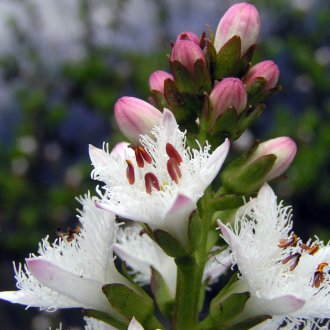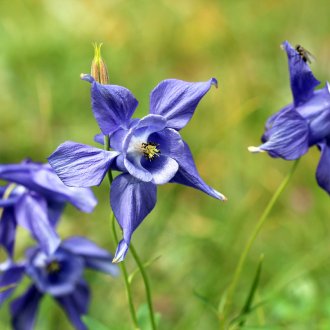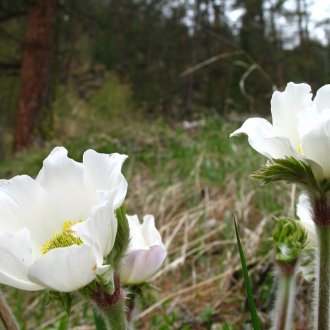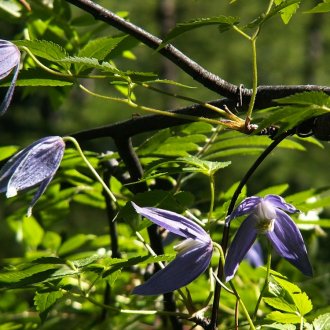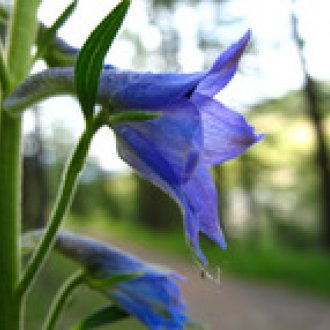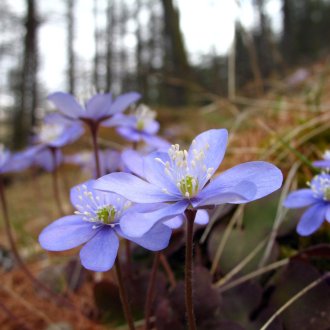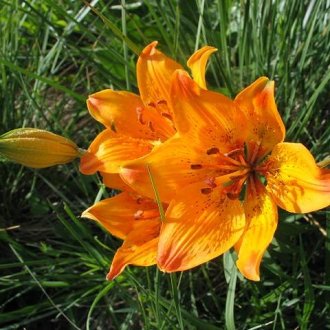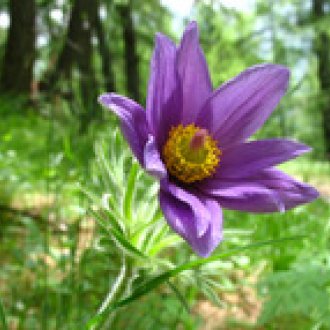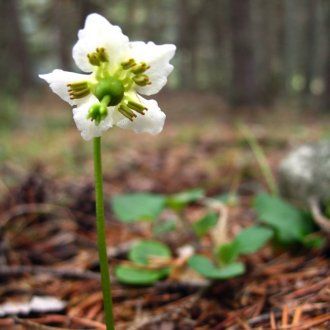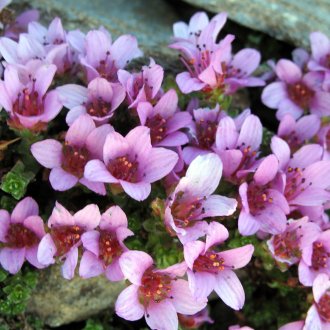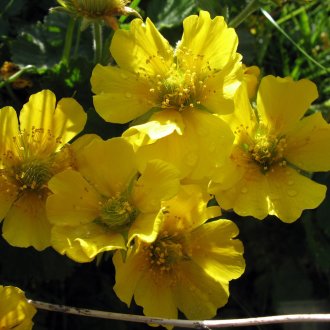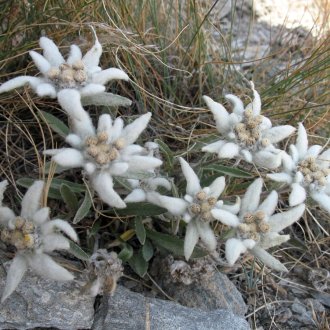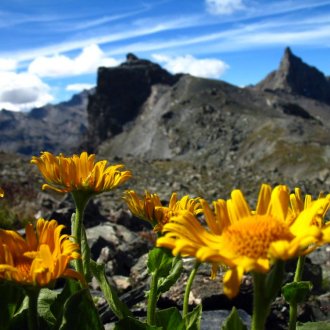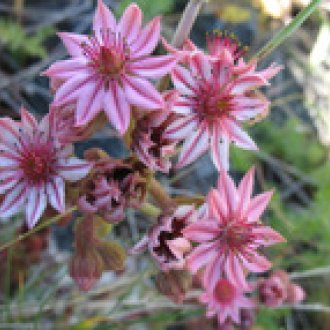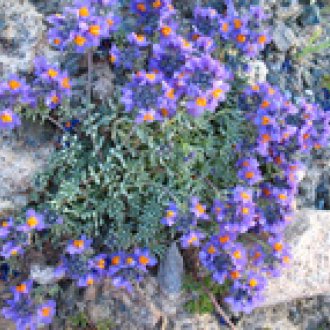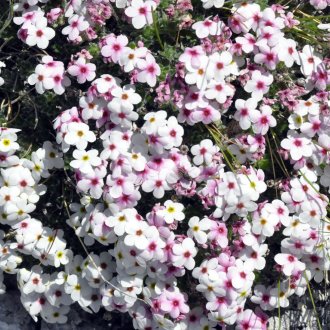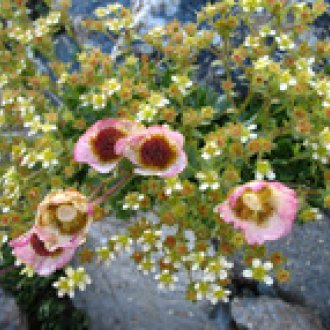
The flora of Queyras Natural Park
2500 species of flowers
The flora of the Regional Natural Park of the Queyras comprises some 2500 species. Here there are no pesticides or artificial fertilisers; only sheep and cattle manure are used to enrich the soil. And the farmers, using old-fashioned common sense, delay the haymaking until after the flowers have been pollinated and their seeds dispersed. The result is an exceptionally rich hay crop, an unrivalled variety of flowers, so scented honey from healthy bees, and scenery that takes your breath away.
The southern part of the Hautes-Alpes benefits from the Mediterranean climate, and here we find many flowers which are also common in Provence. In the Queyras, by contrast, the climate in winter is much harsher and plants must adjust to the cold and a very short growing season. Many Alpine species spend six or eight months beneath the snow and must then grow green, flower and produce their seeds in a very short time before dying back again. We must marvel at the ability of flowers like edelweiss, saxifrage and houseleeks to protect themselves from cold and survive despite the severe frosts.
Meadow flowers
Wetland flowers
Woodland flowers
High mountain flowers
2500 species of flowers
The flora of the Queyras Regional Nature Park in the Hautes Alpes, France, includes 2,500 species of flowers... No fertilizers or pesticides are used here: the soil is nourished by sheep and cow manure. It's the common sense of the farmers that makes them wait to mow until the flower seeds have dispersed, resulting in hay of exceptional quality, an unrivalled variety of species, honey from all flowers, bees in top form, and a natural beauty to fall to your knees...
The southern part of the Hautes Alpes department is subject to Mediterranean influences, and its flora includes many flowers commonly found in Provence. In the Queyras, where climatic conditions are much harsher, the flora has had to adapt to the cold and very short vegetation periods. How many flowers in the Alps spend six to eight months under the snow, having to green up, bloom and produce seeds in a very short space of time before disappearing? Flowers such as edelweiss, saxifrages and houseleeks are so ingenious at protecting themselves from the cold and surviving despite the intense frost!
Prairie flowers

Flowers of damp places
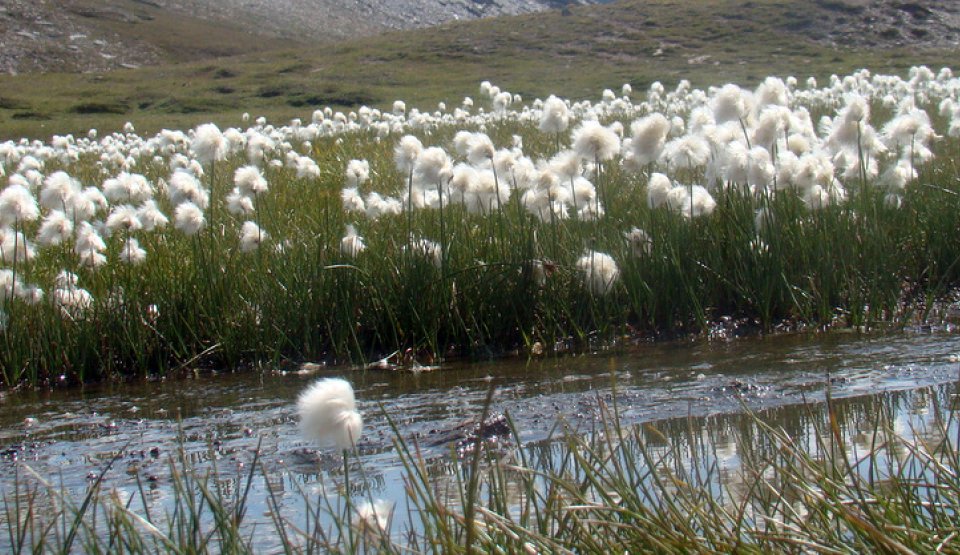
Undergrowth flowers
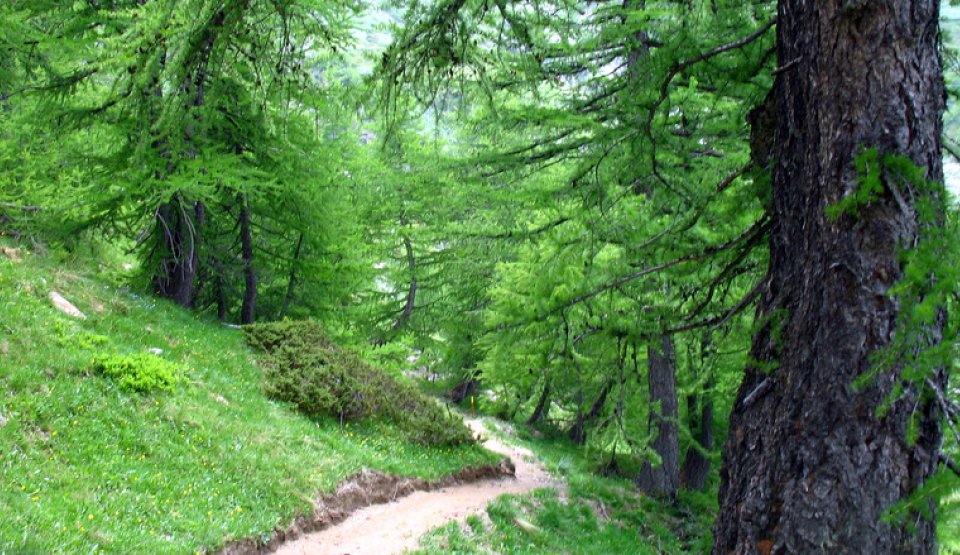
High altitude flowers
